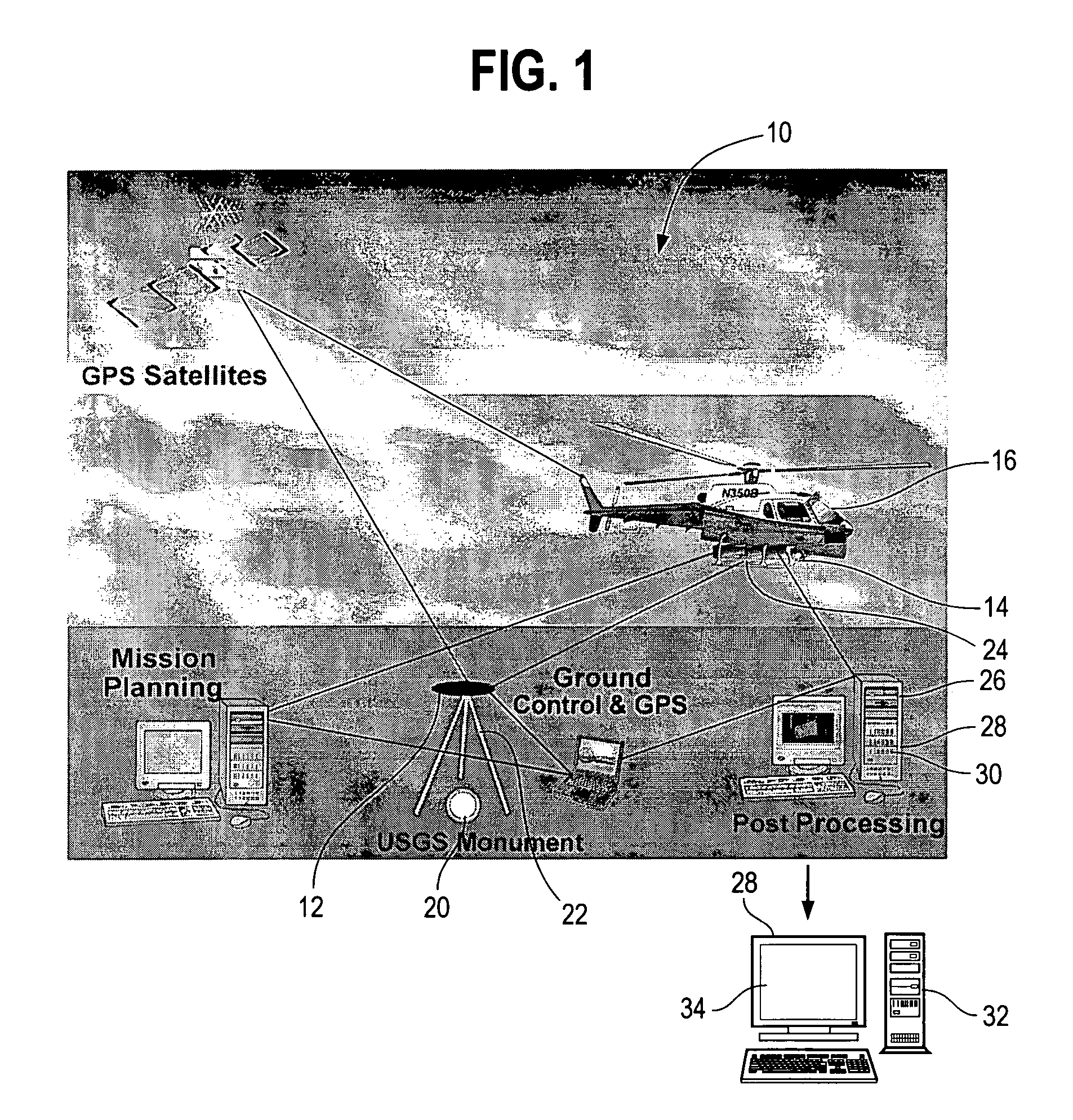Method and system for direct classification from three dimensional digital imaging
a three-dimensional digital imaging and classification method technology, applied in the direction of reradiation, distance measurement, instruments, etc., can solve the problems of inability to produce repeatable visualization techniques, inability to interpret the resulting imagery with considerable time and effort (manual human intervention), and methods producing inadequate and inaccurate results
- Summary
- Abstract
- Description
- Claims
- Application Information
AI Technical Summary
Benefits of technology
Problems solved by technology
Method used
Image
Examples
Embodiment Construction
[0022]While the present invention is capable of embodiment in various forms, there is shown in the drawings and will hereinafter be described a presently preferred embodiment with the understanding that the present disclosure is to be considered as an exemplification of the invention, and is not intended to limit the invention to the specific embodiment illustrated.
[0023]FIG. 1 shows an example of a data capturing system which is a typical commercial LIDAR system 10 that captures digital image data in the form of apparently random three-dimensional point (x, y, z) coordinates (in any of several Cartesian coordinate reference frames) associated with a particular geographic path / corridor or area 12 along waypoints that define the path / corridor and / or the bounded area to be scanned to detect the presence of natural objects such as the ground surface, vegetation and man-made objects such as electric power transmission towers and / or conductors. The system 10 is an airborne remote sensing...
PUM
 Login to View More
Login to View More Abstract
Description
Claims
Application Information
 Login to View More
Login to View More - R&D
- Intellectual Property
- Life Sciences
- Materials
- Tech Scout
- Unparalleled Data Quality
- Higher Quality Content
- 60% Fewer Hallucinations
Browse by: Latest US Patents, China's latest patents, Technical Efficacy Thesaurus, Application Domain, Technology Topic, Popular Technical Reports.
© 2025 PatSnap. All rights reserved.Legal|Privacy policy|Modern Slavery Act Transparency Statement|Sitemap|About US| Contact US: help@patsnap.com



